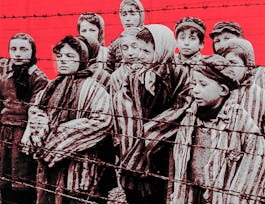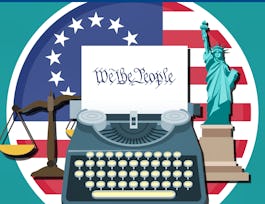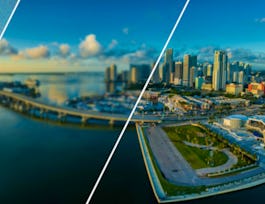This course is a short taster on the topic of the use of Images, Film, and their use in historical interpretation in the 20th century. It is primarily provided for those who have a general interest in history that draws on photojournalism as primary evidence, and films based on historical events.



Film, Images & Historical Interpretation in the 20th Century: The Camera Never Lies


Instructors: Dr Emmett Sullivan
Sponsored by Louisiana Workforce Commission
48,937 already enrolled
(372 reviews)
Details to know

Add to your LinkedIn profile
6 assignments
See how employees at top companies are mastering in-demand skills


Earn a career certificate
Add this credential to your LinkedIn profile, resume, or CV
Share it on social media and in your performance review

There are 6 modules in this course
We will explore the issues associated with the use of images as a source for historical research and consider a number of examples where image manipulation has been uncovered
What's included
7 videos8 readings1 assignment1 discussion prompt
We will review a number of cases studies where images have either shaped our opinion of events or have been suppressed from the public at the time, to avoid adverse or negative reaction.
What's included
8 videos6 readings1 assignment2 discussion prompts
The cause célèbre' of historical manipulation - Joseph Stalin. The 'air brushing' of historical records, and in this case the literal airbrushing of Soviet images in the 1930s and 1940s
What's included
10 videos4 readings1 assignment2 discussion prompts
With respect to Reportage and the use of images as a evidential record, should we condemn Stalin in the last 20th and early 21th century? We use an example from 1993 to illustrate this point.
What's included
12 videos11 readings1 assignment1 peer review3 discussion prompts
The photograph of the raising of the flag at Mt. Suribachi was a Pulitzer Prize winning image, and the base of the film 'The Flag of our Fathers'. We will explore the use of the still and the motion picture to influence our opinion.
What's included
11 videos8 readings1 assignment2 discussion prompts
What is 'Public History'? How do photographs and films with an historical theme shape our awareness of historical events and our memories?
What's included
8 videos2 readings1 assignment1 peer review
Instructors


Why people choose Coursera for their career




Learner reviews
372 reviews
- 5 stars
69.70%
- 4 stars
24.12%
- 3 stars
3.75%
- 2 stars
0.26%
- 1 star
2.14%
Showing 3 of 372
Reviewed on Sep 7, 2023
Amazing Course. I was able to grasp how media plays an important role in shaping our thoughts and ideals.
Reviewed on Apr 22, 2021
Excellent course, learn a great deal about the subject in a short time. This course and the program are great for those who strive to be life long learners.
Reviewed on Dec 12, 2019
About half the links in this course are broken, which is very frustrating. I found the course content itself to be very interesting, though!
Recommended if you're interested in Arts and Humanities

University of California, Santa Cruz

University of Pennsylvania

Institut Mines-Télécom

The University of Melbourne

Open new doors with Coursera Plus
Unlimited access to 10,000+ world-class courses, hands-on projects, and job-ready certificate programs - all included in your subscription
Advance your career with an online degree
Earn a degree from world-class universities - 100% online
Join over 3,400 global companies that choose Coursera for Business
Upskill your employees to excel in the digital economy




